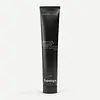What's inside
What's inside
 Key Ingredients
Key Ingredients

 Benefits
Benefits

 Concerns
Concerns

 Ingredients Side-by-side
Ingredients Side-by-side

Water
Skin ConditioningZinc Oxide
Cosmetic ColorantCaprylic/Capric Triglyceride
MaskingUndecane
EmollientPropanediol
SolventPolyglyceryl-6 Stearate
EmollientGlycerin
HumectantTridecane
PerfumingLauroyl Lysine
Skin ConditioningPentylene Glycol
Skin ConditioningButyrospermum Parkii Butter
Skin ConditioningGlyceryl Isostearate
EmollientResveratrol
AntioxidantBiosaccharide Gum-4
Skin ConditioningPolyhydroxystearic Acid
EmulsifyingCitric Acid
BufferingPolyglyceryl-6 Behenate
Emulsion StabilisingGlyceryl Caprylate
EmollientXanthan Gum
Emulsifying1,2-Hexanediol
Skin ConditioningSodium Citrate
BufferingHedychium Coronarium Root Extract
MaskingTocopherol
AntioxidantWater, Zinc Oxide, Caprylic/Capric Triglyceride, Undecane, Propanediol, Polyglyceryl-6 Stearate, Glycerin, Tridecane, Lauroyl Lysine, Pentylene Glycol, Butyrospermum Parkii Butter, Glyceryl Isostearate, Resveratrol, Biosaccharide Gum-4, Polyhydroxystearic Acid, Citric Acid, Polyglyceryl-6 Behenate, Glyceryl Caprylate, Xanthan Gum, 1,2-Hexanediol, Sodium Citrate, Hedychium Coronarium Root Extract, Tocopherol
Water
Skin ConditioningPropanediol Dicaprylate
EmollientDiethylamino Hydroxybenzoyl Hexyl Benzoate
UV FilterMyristyl Myristate
EmollientEthylhexyl Triazone
UV AbsorberTitanium Dioxide
Cosmetic ColorantBis-Ethylhexyloxyphenol Methoxyphenyl Triazine
Skin ConditioningOryza Sativa Starch
AbsorbentPolyglyceryl-6 Stearate
EmollientBehenyl Alcohol
EmollientPhenylbenzimidazole Sulfonic Acid
UV AbsorberDiisostearoyl Polyglyceryl-3 Dimer Dilinoleate
EmollientCaprylic/Capric Triglyceride
Masking1,2-Heptanediol
Skin ConditioningPropanediol
SolventSodium Stearoyl Glutamate
CleansingHydrolyzed Hyaluronic Acid
HumectantAloe Barbadensis Leaf Juice Powder
Skin ConditioningLimonium Narbonense Flower/Leaf/Stem Extract
AntioxidantAlumina
AbrasiveSodium Hydroxide
BufferingStearic Acid
CleansingPolyglyceryl-6 Behenate
Emulsion StabilisingGlycerin
HumectantSodium Gluconate
Skin ConditioningAcacia Senegal Gum
MaskingXanthan Gum
EmulsifyingO-Cymen-5-Ol
AntimicrobialCitric Acid
BufferingWater, Propanediol Dicaprylate, Diethylamino Hydroxybenzoyl Hexyl Benzoate, Myristyl Myristate, Ethylhexyl Triazone, Titanium Dioxide, Bis-Ethylhexyloxyphenol Methoxyphenyl Triazine, Oryza Sativa Starch, Polyglyceryl-6 Stearate, Behenyl Alcohol, Phenylbenzimidazole Sulfonic Acid, Diisostearoyl Polyglyceryl-3 Dimer Dilinoleate, Caprylic/Capric Triglyceride, 1,2-Heptanediol, Propanediol, Sodium Stearoyl Glutamate, Hydrolyzed Hyaluronic Acid, Aloe Barbadensis Leaf Juice Powder, Limonium Narbonense Flower/Leaf/Stem Extract, Alumina, Sodium Hydroxide, Stearic Acid, Polyglyceryl-6 Behenate, Glycerin, Sodium Gluconate, Acacia Senegal Gum, Xanthan Gum, O-Cymen-5-Ol, Citric Acid
Ingredients Explained
These ingredients are found in both products.
Ingredients higher up in an ingredient list are typically present in a larger amount.
This ingredient is an emollient, solvent, and texture enhancer. It is considered a skin-softener by helping the skin prevent moisture loss.
It helps thicken a product's formula and makes it easier to spread by dissolving clumping compounds.
Caprylic Triglyceride is made by combining glycerin with coconut oil, forming a clear liquid.
While there is an assumption Caprylic Triglyceride can clog pores due to it being derived from coconut oil, there is no research supporting this.
Learn more about Caprylic/Capric TriglycerideCitric Acid is an alpha hydroxy acid (AHA) naturally found in citrus fruits like oranges, lemons, and limes.
Like other AHAs, citric acid can exfoliate skin by breaking down the bonds that hold dead skin cells together. This helps reveal smoother and brighter skin underneath.
However, this exfoliating effect only happens at high concentrations (20%) which can be hard to find in cosmetic products.
Due to this, citric acid is usually included in small amounts as a pH adjuster. This helps keep products slightly more acidic and compatible with skin's natural pH.
In skincare formulas, citric acid can:
While it can provide some skin benefits, research shows lactic acid and glycolic acid are generally more effective and less irritating exfoliants.
Most citric acid used in skincare today is made by fermenting sugars (usually from molasses). This synthetic version is identical to the natural citrus form but easier to stabilize and use in formulations.
Read more about some other popular AHA's here:
Learn more about Citric AcidGlycerin is already naturally found in your skin. It helps moisturize and protect your skin.
A study from 2016 found glycerin to be more effective as a humectant than AHAs and hyaluronic acid.
As a humectant, it helps the skin stay hydrated by pulling moisture to your skin. The low molecular weight of glycerin allows it to pull moisture into the deeper layers of your skin.
Hydrated skin improves your skin barrier; Your skin barrier helps protect against irritants and bacteria.
Glycerin has also been found to have antimicrobial and antiviral properties. Due to these properties, glycerin is often used in wound and burn treatments.
In cosmetics, glycerin is usually derived from plants such as soybean or palm. However, it can also be sourced from animals, such as tallow or animal fat.
This ingredient is organic, colorless, odorless, and non-toxic.
Glycerin is the name for this ingredient in American English. British English uses Glycerol/Glycerine.
Learn more about GlycerinPolyglyceryl-6 Behenate isn't fungal acne safe.
Polyglyceryl-6 Stearate isn't fungal acne safe.
Propanediol is an all-star ingredient. It softens, hydrates, and smooths the skin.
It’s often used to:
Propanediol is not likely to cause sensitivity and considered safe to use. It is derived from corn or petroleum with a clear color and no scent.
Learn more about PropanediolWater. It's the most common cosmetic ingredient of all. You'll usually see it at the top of ingredient lists, meaning that it makes up the largest part of the product.
So why is it so popular? Water most often acts as a solvent - this means that it helps dissolve other ingredients into the formulation.
You'll also recognize water as that liquid we all need to stay alive. If you see this, drink a glass of water. Stay hydrated!
Learn more about WaterXanthan gum is used as a stabilizer and thickener within cosmetic products. It helps give products a sticky, thick feeling - preventing them from being too runny.
On the technical side of things, xanthan gum is a polysaccharide - a combination consisting of multiple sugar molecules bonded together.
Xanthan gum is a pretty common and great ingredient. It is a natural, non-toxic, non-irritating ingredient that is also commonly used in food products.
Learn more about Xanthan Gum